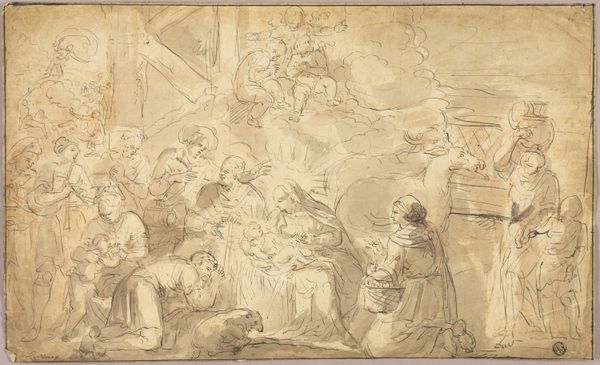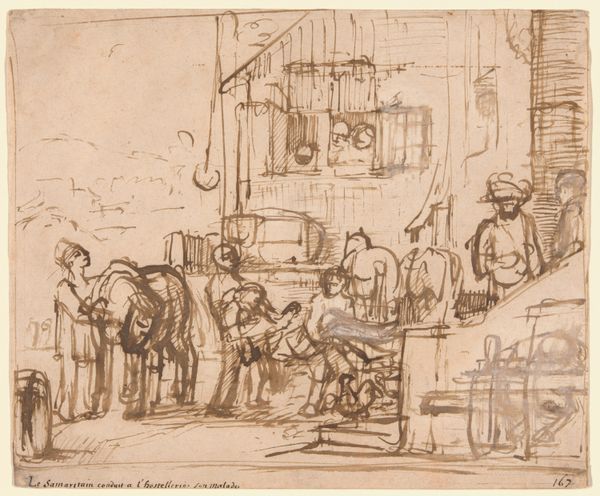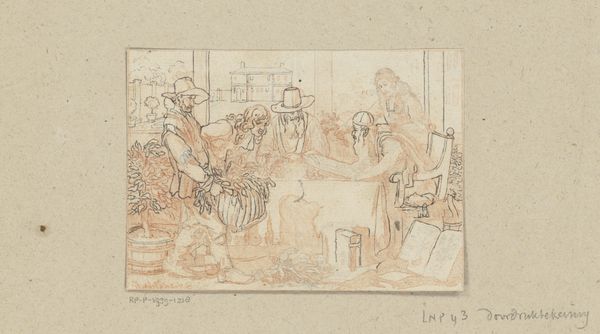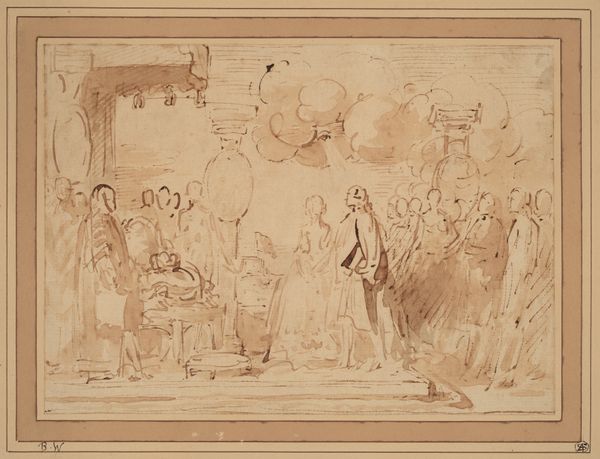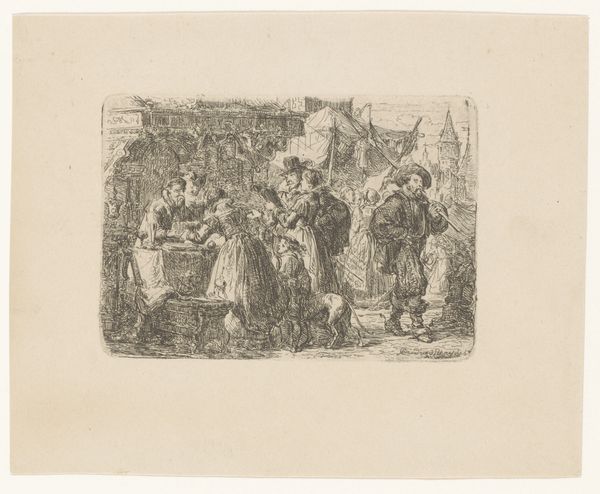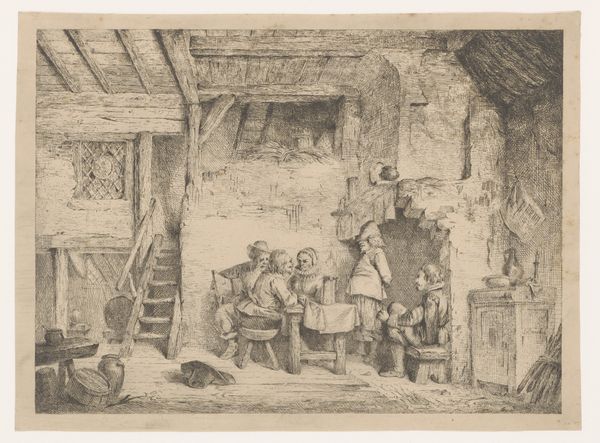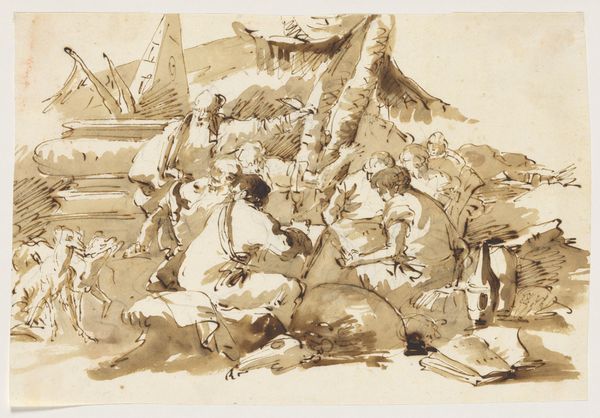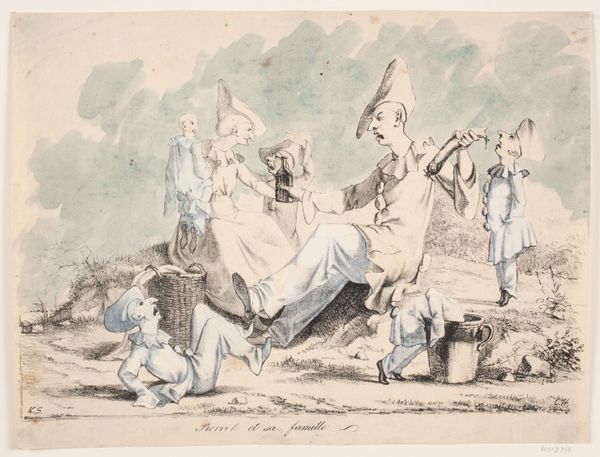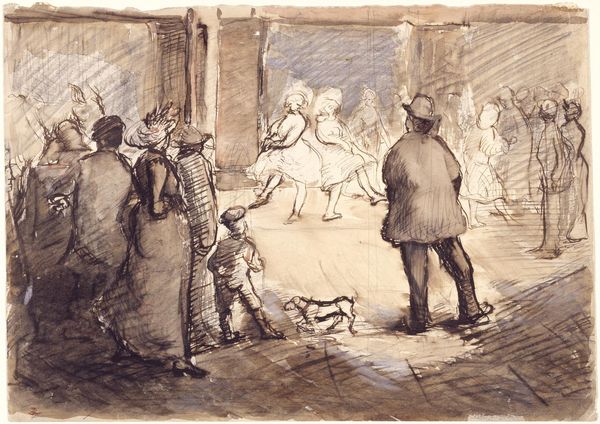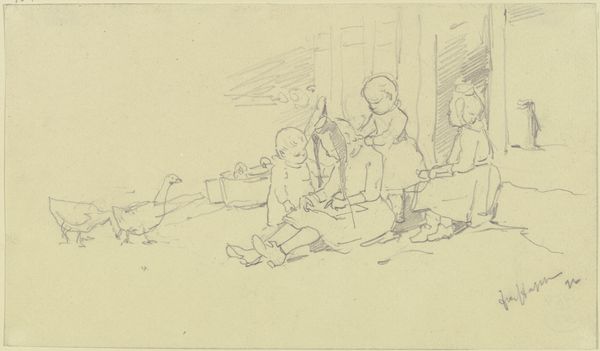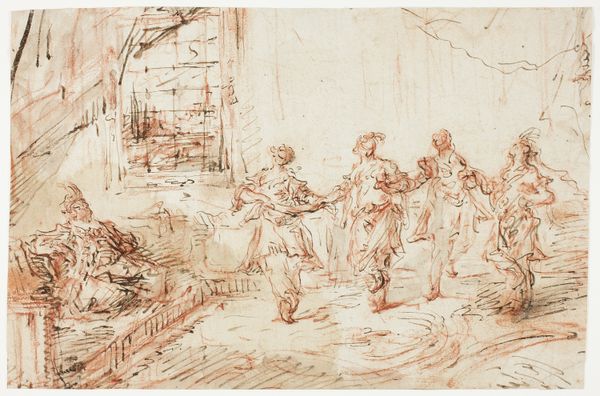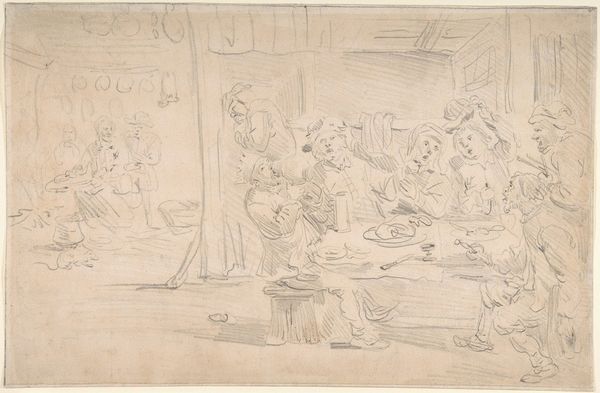
drawing, pencil
#
drawing
#
landscape
#
pencil
#
genre-painting
#
realism
Dimensions: overall: 6.8 x 15.8 cm (2 11/16 x 6 1/4 in.)
Copyright: National Gallery of Art: CC0 1.0
Samuel Prout made this watercolor drawing of an outdoor market in the 19th century, a time when the rise of industrial capitalism was beginning to transform European society. Here, Prout captures a bustling scene, likely somewhere in continental Europe, filled with market stalls and local people engaged in commerce and trade. The artist's focus on the architecture of the market and the figures within it offers a glimpse into the everyday lives of ordinary people. The image creates meaning through visual codes such as the clothing worn by the figures. Their attire, like the baskets and stalls, serve as cultural references and historical associations. The piece may seem like a straightforward depiction, but it also reflects the broader social and economic changes happening at the time. As art historians, we can delve deeper by examining the socio-political and economic forces that shaped its creation and reception. We can reflect on the meaning of art as something that is contingent on social and institutional context.
Comments
No comments
Be the first to comment and join the conversation on the ultimate creative platform.

